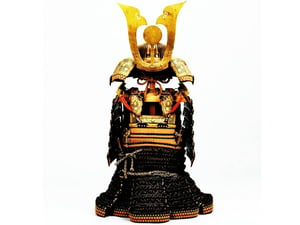Buddha sculptures almost monopolize the history of Japanese sculpture. Buddha statues are broadly classified into four types, Tathamon, Bodhisattva, Ming Ou, and Heaven, and each format is largely decided throughout each era. However, by carefully comparing the works of each period and seeing the change in shape carefully, it is possible to concretely learn how to express each period and the beauty required by people in each era to Buddha statue, You can see that the expression is changing by the technique.
Sculpture is a three-dimensional representation of the image of an object by engraving carving wood, stone, earth, metal and the like. Or digging engravings, figures, etc. on those surfaces. Or artwork produced stereoscopically using various materials for the purpose of artistic appreciation. It also refers to its expression domain. I will describe the sculpture (sculpture, English: sculpture) as a work of art in the concept of Western art below.
The technique of engraving hard material is also called sculpture (carving), whereas the technique of placing a plastic material to form a shape is called sculpturing (modeling, modeling). Sometimes we call works made by sculpture as statues in particular.
Materials used are various kinds such as stone, wood, earth, felt, plaster, paper, fiber, metal (iron, copper, etc.), resin, glass, wax, and many works combining several materials.
Objects (motifs) of sculpture originally were concrete objects such as humans and familiar animals (concrete sculpture), but in the 20th century, many representations of the mind (abstract sculptures) also came to be produced .
The statue (scroll) is about three-dimensional modeling such as a statue made by plastic manufacturing. In the broad sense it also includes work by paper clay. Making the prototype of the casting work is usually done by using the method of casting.
Unlike terra cotta, do not bake. It arrived in Japan from Tang during the early Nara period, and it was prosperous in the late Nara period. Winding a straw rope etc. on a heart tree, swell up from rough rough soil of grain to fine finish soil, and mold it with a spatula or a finger.
Gyeongjing has created many works that had been devised innovative unique to the Buddhist group that had been far from the power of Kyoto.
While inheriting the tradition of Tenpyei sculpture, it also fell off the influence of the former style, also conforms to the new sense of emerging force samurai, the powerful reality that reflects the spirit of the new era and the rich appearance of human nature make it It is a feature.
In sculpture, sculpture of Buddha statue turned down and sculpture to the gate and the interior of the pavilion became terrible. Transparent sculpture method was also used for intergranular sculpture decorating the castle and the interior of the lodging house. In addition, gables that decorate the exterior of the building were also devised various forms and sculptures.
In the Momoyama era, which respects reality and utility, sculpture did not necessarily lead to independent works like those seen in Tempyo culture and Kamakura culture. There, the position as an appendix of the venue was clear, and sculpture works closest to everyday life were born.
In this exhibition, we will introduce the history of Japanese sculpture, centered on the statue of the wooden sculptures of the Heian and Kamakura periods, which is the heyday of Japanese original wood carving techniques, and the gold-copper Buddha made in large numbers following the wood carving. The “Amitabha Nyorai and Bilateral Samurai Standing Statue” is a style prevalent in the Kamakura period called Zenkoji Triangle, but its prototype is required for the three-discipleship style in “Tathagata and Both Sides” There is a possibility, it is the first opportunity to exhibit at the same time like this time.
Tokyo National Museum
The Tokyo National Museum collects and keeps cultural assets spanning the Toyo region widely, mainly in Japan as a comprehensive museum in Japan, for public viewing and conducting research related to this and educational dissemination project etc. , Aims to preserve and utilize cultural properties that are valuable national assets.
From April 1, 2007, the National Museum belonging to the National Museum of Japan and the National Institute for Cultural Properties to which Japan National Institute of Advanced Industrial Science and Technology belongs were integrated, and the “National Institute of Cultural Properties” was launched. We will promote the preservation and utilization of cultural properties, which are precious national assets under the new corporation, more efficiently and effectively.

















